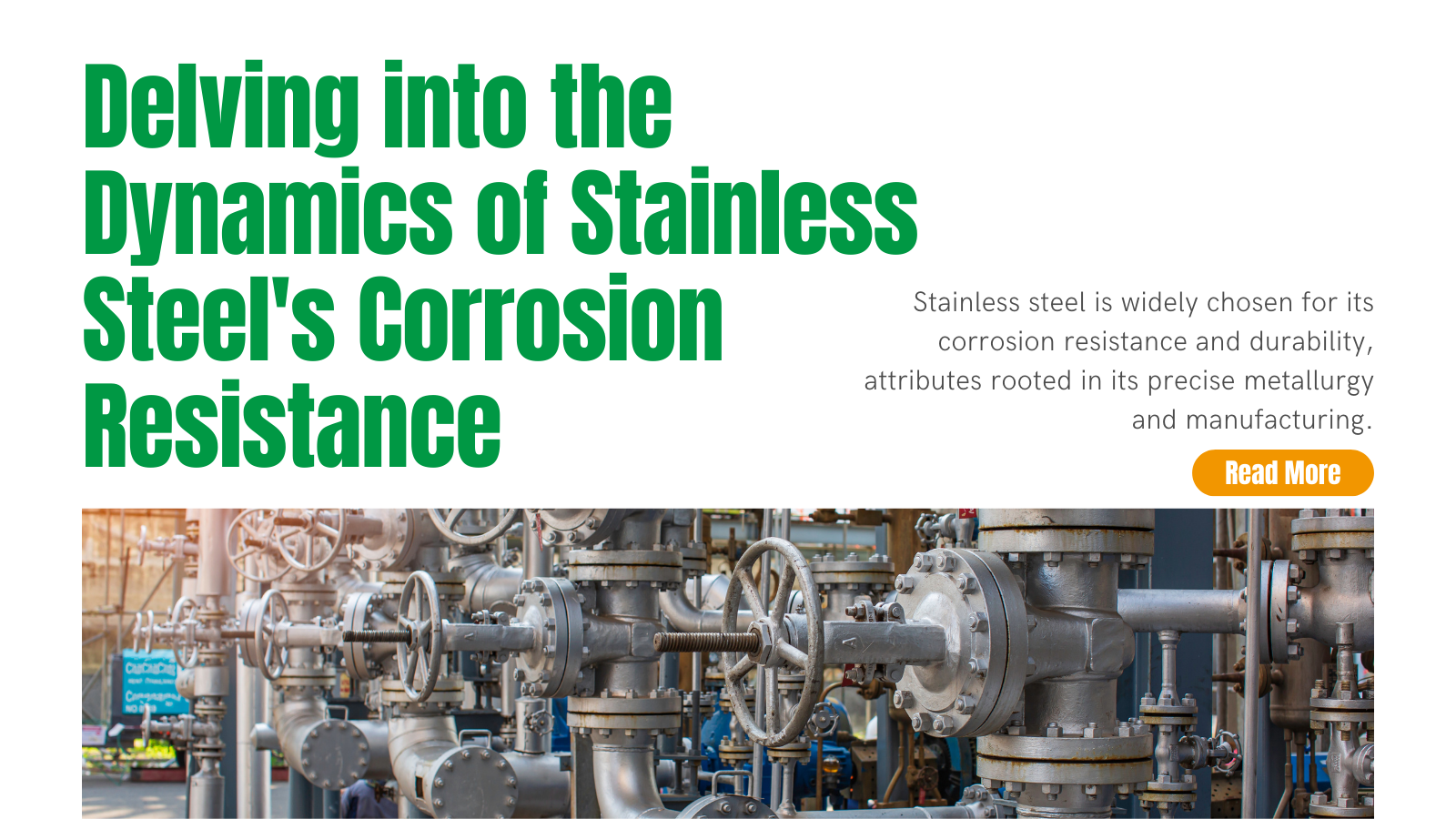2023.12.08
Delving into the Dynamics of Stainless Steel's Corrosion Resistance

Stainless steel, renowned for its corrosion resistance and durability, is a staple choice in both consumer and industrial applications. However, understanding the nuances of its corrosion-resistant properties requires a closer look at its metallurgic composition and manufacturing processes.
The Enigma of Stainless Steel's Corrosion Resistance
At the core of stainless steel's resistance lies a common trait among its various grades—a passivation layer. This thin layer of chromium oxide forms when the metal interacts with oxygen. While nearly invisible, this layer plays a crucial role in protecting the metal from corrosion. The passivation layer is self-generating, allowing the stainless steel's texture to shine through, ranging from high gloss to matte.
*Read More About "passivation layer": Elevating Stainless Steel Corrosion Resistance: Passivation
Despite this robust defense mechanism, stainless steel is not impervious to corrosion. Specific scenarios can compromise its resistance, making it imperative to delve into various types of corrosion.
Navigating Chemical Interactions: Stainless Steel and Corrosive Compounds
One prevalent scenario triggering stainless steel corrosion is prolonged contact with liquids or chemicals, leading to what is known as general corrosion—a typically uniform corrosion across the steel's surface. Understanding how stainless steel interacts with different compounds is pivotal:
Acids:
While stainless steel generally resists acidic corrosion, resistance levels vary based on the steel grade, acid concentration, and environmental temperature. For instance, Grades 316 and 317 exhibit resistance to phosphoric and sulfuric acids, while Grade 904 tackles high concentrations of sulfuric acid.
Bases:
Strong resistance to weak bases characterizes stainless steel, but caution is warranted with stronger bases, as they may cause cracking or etching corrosion. Particular care is needed when dealing with chloride solutions like sodium hypochlorite.
Organics:
Resistance to organic compounds varies across stainless steel grades, with 300-series steels often performing well. Consulting professionals, such as INOX-TEK, can ensure the safe and enduring use of stainless steel for storing organics.
Beyond General Corrosion: Specialized Forms
Galling:
A corrosion phenomenon observed when stainless steel parts are forcibly joined, often impacting fasteners like nuts and bolts.
Galvanic Corrosion:
Occurs when stainless steel interfaces with other metals in a moist environment, resulting in accelerated corrosion of one metal.
Pitting:
Typically arises from exposure to environmental chemicals or poor aeration, more common in steels with defects. Adequate oxygen availability and molybdenum content mitigate pitting.
Crevice Corrosion:
Caused by a gap between stainless steel and another material, allowing chloride concentration. Proper welding, drainage, and gaskets help prevent crevice corrosion.
Weld Decay:
Intergranular corrosion resulting from heating stainless steel to specific temperature ranges during welding. Proper steel selection and post-weld heat treatment mitigate weld decay.
Preserving Stainless Brilliance: Final Considerations
Maintaining stainless steel's visual appeal and structural integrity revolves around safeguarding its chromium layer. Strategic grade selection based on the application environment optimizes corrosion resistance. While this guide serves as a valuable starting point, consulting professionals, like INOX-TEK, ensures a tailored and safe solution for every application.
With over years of industry expertise, INOX-TEK stands as a reliable partner for your stainless steel needs in worldwide. For inquiries about stainless steel corrosion, applications, or solutions, reach out to us, and let's craft the perfect solution together.
